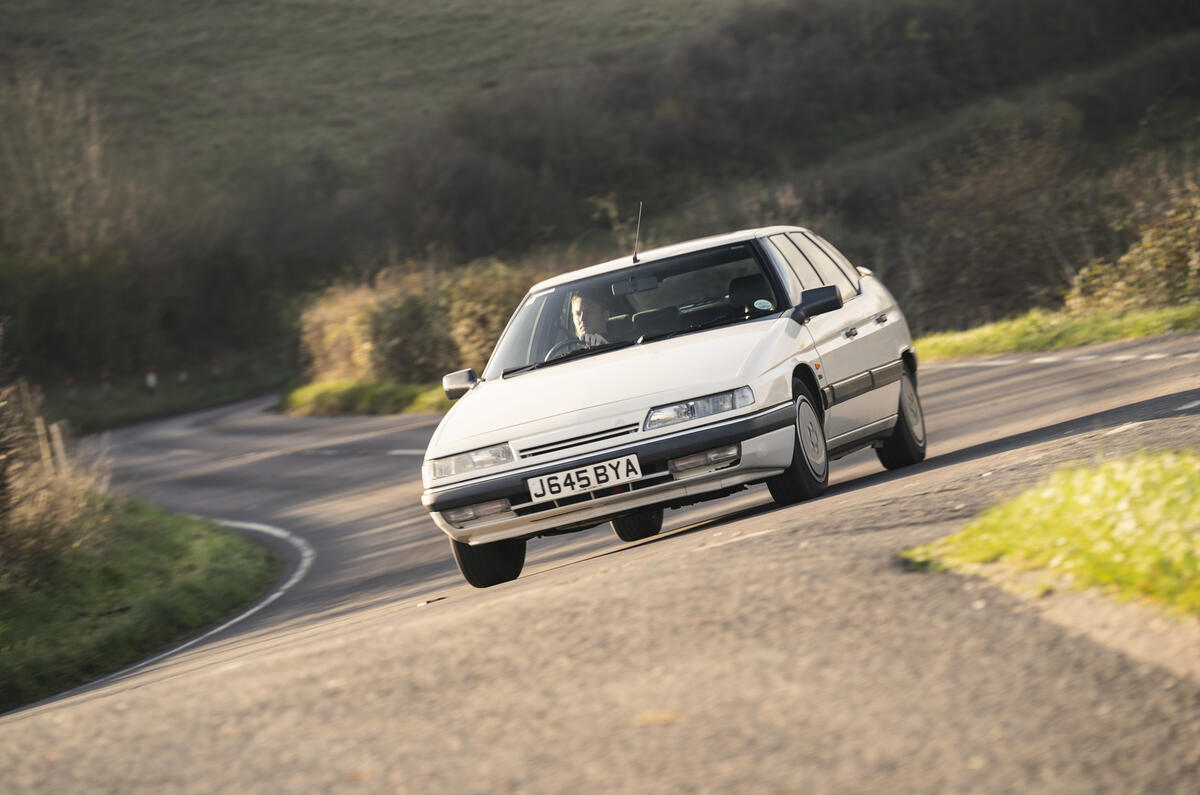Summer, 1989. And two of the most exciting new cars of that year were launched almost simultaneously.
One a potent, high-quality, elegant two-seat sports car, the other the descendant of one of the most jaw-dropping saloons ever made. The sports car was the Mercedes-Benz SL, packed with pioneering new-age tech that almost every car has three decades later, although not usually the pop-up, pyrotechnic roll-over bar that would protect the crania of well-heeled sun lovers suffering a sudden inversion.
The saloon was the Citroën XM, replacement for the CX, which in turn had followed the extraordinary, super-advanced DS. The XM contained its novelties too, not least the new semi-electronic version of Citroën's famous Hydropneumatic suspension.
Renamed Hydractive, it had a whole battery of sensors designed to contain roll and sharpen the handling while preserving the pillowy ride. Also new was a pixel-based message centre and an unusual secondary rear window that meant that when its big rear hatch was opened, back-benchers wouldn't feel the cold draught of reality. Although that might come later.
There was also design house Bertone's slightly unreal styling for the car, the soft curves of the DS and CX swapped for something more angular and emphatically creased. The XM's look wasn't as bold as those of its predecessors – being bold was getting harder as the motor car matured – but it was still a strikingly individual design and one that had a clear link to the smaller BX, also by Bertone and star designer Marcello Gandini. Super-slim headlights, a stepped beltline and a lot of glass distinguished the XM, along with its black tinted vertical tailgate glass and the ability to levitate on start-up.
Which it would usually do, if not always without issues. It turned out to be a depressingly short timespan between the successful launch, which would lead to victory in the European Car of the Year awards with almost double the points of the second-placed SL, and the discovery that the sizeable crop of data-harvesting Hydractive sensors were having their messages corrupted by poor electrical connections. Earthing was a problem and so were Citroën's carefully designed connector blocks. When they malfunctioned, the XM's aircraft-like progress turned more turbulent, although no worse than some of the more firmly suspended of its executive backside-pampering rivals.
But there were other troubles, one of them the message centre, its ability to relay news of faults undermined by the faults it suffered itself. Another was that in France at least, the XM was substantially more expensive than the outgoing CX, especially at the lower end of the range. The XM was better made than the CX, roomier and more robustly finished inside, and when its suspension behaved, it handled better, too.




Join the debate
Add your comment
Check out these car reviews for great insights! Also, if you're into fun games, try the スイカゲーム<a href="https://suikagames.app">Suika Game</a> for a refreshing puzzle experience!
I logged in especially to take issue with this regurgitation of the same old things "Ca" magazine and Mr Bremner have been writing about the XM since 1989.
I ran two of them over 20 years. The first one was a 1989 and it had the little gremlins mentioned here. A garage in Essex fixed them for free and that was the end of that. They didn´t bother me anyway: the car was comfy, smooth, relaxing and spacious.
Over my time with the cars they failed to proceed three times: a fuel pump, a rusty connector (the car was about 17 years old at the time) and an ECU. That was that.
Bremner is wrong about the facelift. The car was intended to have black plastic trim around the windscreen and the door mirrors. The proportions of the car depend on this and painting them body colour cocked them up. I´ll wear my professional hat: I ´m a trained car designer so sorry for pulling rank. My car designer friends agree with me. If Bremner likes the facelift, say he likes he facelift rather than just offer his opinion. Mine´s based on training and practice.
I miss my XM. Rust killed it and it was my fault. I´d drive another one right now if I hadn´t other calls on my finances.
Very comfortable !